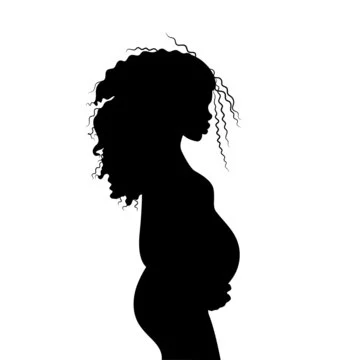During my first trimester with my daughter, I unexpectedly lost seven pounds due to severe nausea that left me unable to tolerate anything other than waffles, cereal, and other simple carbs. The extent of my morning sickness took me by surprise, as I spent countless days curled up on the couch, anxious about my baby’s well-being while feeling utterly drained and unwell.
At the time of my pregnancy, medical professionals estimated that my daughter would weigh around nine pounds at birth. Given my age, they required weekly ultrasounds, which I welcomed as a means to alleviate my worries about potential complications, such as the cord being wrapped around her neck or her position in the womb.
When she finally arrived, her weight was exactly eight pounds, and she measured 20 inches long. As I cradled her for the first time, she felt surprisingly light in my arms. Yet, as I navigated the learning curve of diaper changes, swaddling, and breastfeeding, that eight pounds quickly became a hefty weight after a long day. With time, my arms grew stronger, and so did my confidence as a new mother.
Twelve was the number of pounds I had fallen below my pre-pregnancy weight during a period of intense postpartum anxiety. Juggling the demands of motherhood left me little time for self-care, and it didn’t dawn on me that fitting back into my pre-pregnancy jeans so quickly might not have been healthy. Those twelve pounds were a reflection of the stress and worry that had affected my body as my daughter also reached her own 12-pound milestone.
Today, my five-year-old daughter weighs a robust forty-four pounds—a solid bundle of joy and curiosity. Just this morning, she reached up for me to pick her up, and I couldn’t help but notice how her arms now seem longer and stronger. I easily could have said, “No, you’re getting too big for this.” However, I chose to say yes. I balanced various tasks while lifting her, savoring her sweet scent and the feeling of holding her close, knowing these moments are fleeting.
Lately, she has been asking for more piggyback rides, and I gladly oblige. Yes, always yes, as long as I am able to lift her. Surprisingly, she feels heavier now, a testament to the time we’ve spent together and the physical strength I’ve gained from lifting her over the years. My muscle tone isn’t from sporadic gym visits but from the daily practice of carrying this gradually growing weight.
I find myself marveling at how quickly time passes, trying to memorize her changing features. I cherish the soft skin on her arms and hold her hand whenever we cross streets, ensuring her safety. I lift her up when she leaps into my arms, confident that I will always catch her.
I welcome her playful antics, whether it’s tackling me or cuddling up beside me while we watch her favorite shows. I appreciate her need for closeness, knowing that this phase of physical affection won’t last forever. A thought often echoes in my mind: “One day, you’ll put her down and never pick her up again.”
So, I bend my knees and lift her, holding her close for as long as I can. For more insights on motherhood and home insemination, you can visit this resource on fertility treatments or explore this authority on fertility. Additionally, for further information on privacy policies, check this link here.
Summary:
This article explores the emotional and physical challenges of motherhood, detailing a mother’s experiences from pregnancy through early childhood. It highlights the importance of cherishing moments of closeness and the evolving nature of the mother-child relationship.
